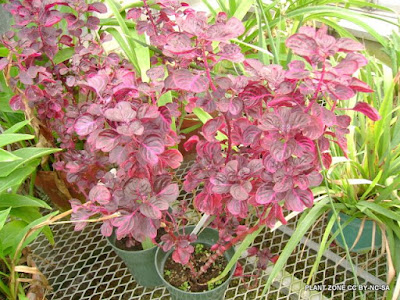Here are two of my favourite 'odd' plants from the gardens
This is an old Lantana that has been pruned into a tree (15 or more years). I absolutely love it and can imagine three or four in a planter along a sidewalk or something similar.
Here's a closeup of the flowers. These will eventually turn into green and then black berries. I grabbed several dozens seeds which I have in a moist paper towel until they sprout.
This is one of my favourite banana species (it's probably because of my red foliage fetish). This one is called Musa sumatrana. There is a completely red variety that I have also seen. I think it's called Siam Ruby.
Where would we be without bees? This final image is of a bee hive. It is conveniently located over a handicapped parking spot. I've seen many people pull into this spot just to back out a few seconds later when they here and see all the bees (probably yellow jackets which aren't bees).





















































